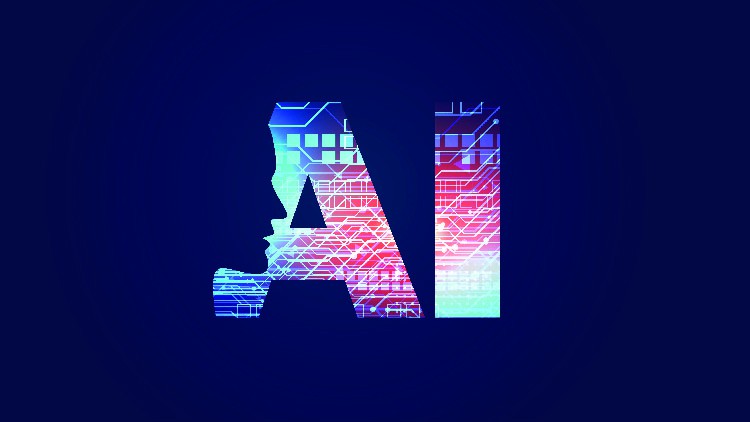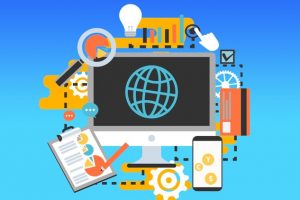The introduction of AI and Machine Learning with Python
Learn about Data Science, Machine Learning (Artificial Intelligence), Deep Learning, and more from the very beginning!
What you’ll learn
The introduction of AI and Machine Learning with Python
- Find out what AI and machine learning are and how they can be used.
- The best way to learn how to handle Data Frames is to do a lot of different things, like learn how to do things (data exploration, visualization and cleaning)
- Understand and make different algorithms for Supervised Learning.
- Understand and make different Unsupervised Learning algorithms.
- People who study and build NLP (Natural Language Processing) systems should know what they are and how to use them.
- Understand and build systems that give you good advice.
- Learn about Deep Learning and how it works in computer vision.
Requirements
-
Programming skills from the past. Python is a good choice.
Description
Take a look at AI and Machine Learning (ML) and learn how to use advanced algorithms to solve real-world problems. This class will show you how to do a lot of different things with data, like make advanced models and test them.
By the end of the course the students will be able to:
– Make a lot of different AI systems and models.
– Determine how AI can work, including how it interacts with people and the environment.
– Use ideas and methods from natural language processing to automatically extract information from the text (NLP).
– Make deep learning models in Python with TensorFlow and Keras and train them with real-world datasets to make them better.
Machine Learning
- Examples of Machine Learning Algorithms are shown.
- Machine Learning: There are different types of machine learning.
- Supervised
- Unsupervised
- Reinforcement
- There are different types of supervised learning, like the following:
- Classification
- Regression
Learning under supervision – Regression
- Knowing how to use Boxplot and the features of the Boxplot function.
- Using the train test split function, you can learn more about training and testing data.
- Creating a machine learning model to solve a regression problem of predicting weight by using python programming to train and test the model.
An example: Supervised Learning – Binary Classification
- In this lesson, we’ll learn about Binary Classification.
- All about the Decision Tree Algorithm.
- A look at the Random Forest Algorithm.
- Use of a Confusion Matrix to see how well the classification model works.
- Using python programming, I’m going to use the Decision Tree and Random Forest algorithms to build a classification model that can predict diabetic patients, and I’m going to use a confusion matrix to see how well both algorithms work.
This is what happens when someone watches you learn.
- Knowing how to solve Multi-class Classification problems.
- One-on-one method:
- One-vs.Many methods:
- The goal of this project is to use both a One-vs. One and One-vs.Rest approach to solving a multi-class classification problem for Iris flower prediction. Also, using a confusion matrix to see how well both methods worked.
Clustering is a method for learning without being told how to do it.
- Getting to know Unsupervised Learning.
- It is important to use unsupervised learning.
- Unsupervised learning: There are different types of this.
- Clustering
- Association
- A KMeans Algorithm class is going on right now.
- To figure out K, use the Elbow method.
- Using python, I’m going to standardize the data and use the KMeans algorithm to make groups in the dataset.
An example of unsupervised learning: customer segmentation
- Getting to know customer segmentation.
- Types of characteristics that can be used to separate things.
- The idea of targeting.
- To do: Use the KMeans algorithm for this project. Then, look at the clusters to find the right customers to target.
Association Rule Mining is a method for unsupervised learning.
- Recognizing the problems with the association.
- This is called “Market Basket Analysis.”
- Apriori Algorithm is being worked on.
- Metrics to look for when evaluating the rules:
- Support
- Confidence
- Lift
- Steps to find Association Rules.
- Project: Use python programming to make the Apriori algorithm work for Market Basket Analysis.
Recommendation System – A Content-Based System
- Getting to know Recommendation Systems.
- I’m working on systems that make suggestions.
- These are some of the different types of systems that can help you find what you want.
- Working together
- In this project, you’ll build a content-based recommendation system that uses the K Nearest Neighbor (KNN) algorithm to help you find the best car for you based on what you like about cars.
– Collaborative Filtering – Recommendation System
- Understanding the Collaborative filtering method.
- In collaborative filtering, there are different ways to do it.
- Users-based:
- Item-based:
- Building a movie recommendation system with item-based collaborative filtering and data from a movie rating matrix is the goal of this project.
Sentiment Analysis is part of Natural Language Processing.
- There are many different kinds of Natural Language Processing (NLP)
- There are a lot of things that NLP can be used for.
- These are some of the most important NLP tasks.
- Creating a machine learning model that can figure out the mood of a sentence is the goal of this project (Application of NLP).
Deep Learning – Computer Vision
- Getting to know Deep Learning.
- Networks that use Neural Networks and that use Deep Neural Networks.
Images can be classed with a bonus class.
- Take a look at the people who have already been trained.
- ResNet50 model was built with data from ImageNet.
- Project: Use the ResNet50 model to group images (predicting what the image represents).
Who this course is for:
- Beginner Python coders who want to learn more about AI and machine learning.
- Any person who is excited about AI and data science and wants to learn more about them
The introduction of AI and Machine Learning with Python
Data Analysis & Visualization: Python
Download Now









